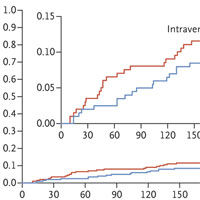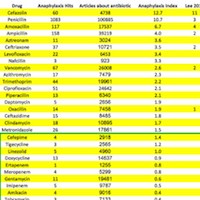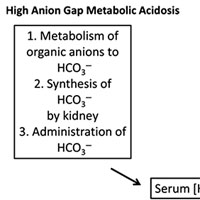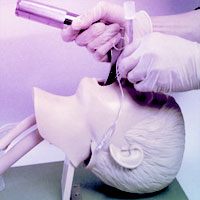Tag: guidelines

Diagnosis and Treatment of Clostridium difficile Infection
Clostridium difficile infection (CDI) is less common than antibiotic-associated diarrhea and irritable bowel syndrome. There is significant concern about overdiagnosis and subsequent overtreatment of CDI with increasing use... read more

Partial Oral versus Intravenous Antibiotic Treatment of Endocarditis
In patients with endocarditis on the left side of the heart who were in stable condition, changing to oral antibiotic treatment was noninferior to continued intravenous antibiotic treatment. After randomization, antibiotic... read more

Clinical Practice Guidelines for the Prevention and Management of Pain, Agitation/Sedation, Delirium, Immobility, and Sleep Disruption in Adult Patients in the ICU
Under the auspices of the Society of Critical Care Medicine, this executive summary aims to provide the most clinically meaningful and novel aspects, by section, of the PADIS guidelines that clinicians, stakeholders, and... read more

Chest Compression Rates and Pediatric In-hospital Cardiac Arrest Survival Outcomes
Non-compliance with compression rate Guidelines was common in this multicenter cohort. Among ICU patients, slightly lower rates were associated with improved outcomes compared to Guidelines.Prospective observational study... read more

Ranking antibiotics in order of allergenicity
Our current approach to allergy is primarily patient-based. This focuses on the patient’s prior history of reaction: how severe was it, when was it, how certain are we that it was truly allergic? This strategy has been... read more

Methodologic Innovation in Creating Clinical Practice Guidelines
Our multifaceted, interdisciplinary approach and novel methodologic strategies can help inform the development of future critical care clinical practice guidelines. Critical illness survivors contributed to prioritizing topics,... read more

Intracranial Pressure Thresholds in Severe Traumatic Brain Injury: Pro
Teleologically, the mammalian brain has evolved to be the central component of life. It coordinates afferent and efferent neural pathways, integrates neurohormonal responses and, in humans, produces higher cortical effects... read more

The Checklist Manifesto: How to Get Things Right
We train longer, specialize more, use ever-advancing technologies, and still we fail. Atul Gawande makes a compelling argument that we can do better, using the simplest of methods: the checklist. In riveting stories, he reveals... read more

Treatment of Acute Non-Anion Gap Metabolic Acidosis
Acute non-anion gap metabolic acidosis is now recognized to be as a common cause of metabolic acidosis, particularly in the ICU. Further examination of its impact on cellular function and clinical outcome are needed. Most... read more

Guidelines for the Management of Tracheal Intubation in Critically Ill Adults
These guidelines describe a comprehensive strategy to optimize oxygenation, airway management, and tracheal intubation in critically ill patients, in all hospital locations. They are a direct response to the 4th National... read more

Predictors of In-Hospital Mortality After RRT Calls
Despite wide adoption of rapid response teams across the United States, predictors of in-hospital mortality for patients receiving rapid response team calls are poorly characterized. Identification of patients at high risk... read more

Very high intact-protein formula successfully provides protein intake according to nutritional recommendations in overweight critically ill patients
Enteral feeding with VHPF (8 g/100 kcal) resulted in higher protein intake and plasma amino acid concentrations than an isocaloric SHPF (5 g/100 kcal), without an increase in energy intake. This VHPF facilitates feeding according... read more

Sepsis Guidelines Spark EM Petition
It took all of one day for emergency physicians to organize opposition after an update to the Surviving Sepsis Campaign Bundle was released online. The day after the new version was released, Scott D. Weingart, MD, the editor-in-chief... read more

The Relationship Between ICU Hypotension and In-hospital Mortality and Morbidity in Septic Patients
Current guidelines recommend maintaining a mean arterial pressure (MAP)≥ 65 mmHg in septic patients. However, the relationship between hypotension and major complications in septic patients remains unclear. We, therefore,... read more




